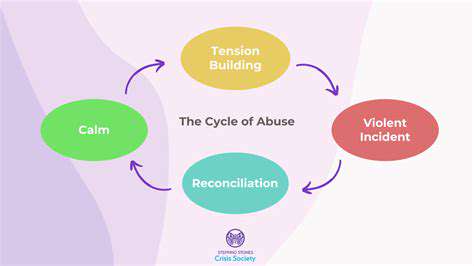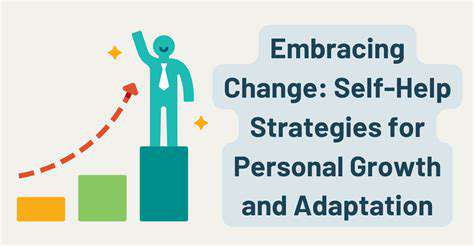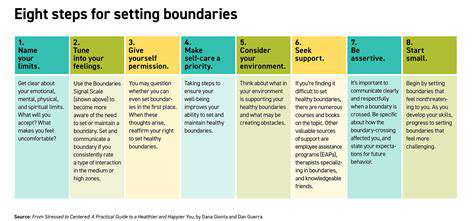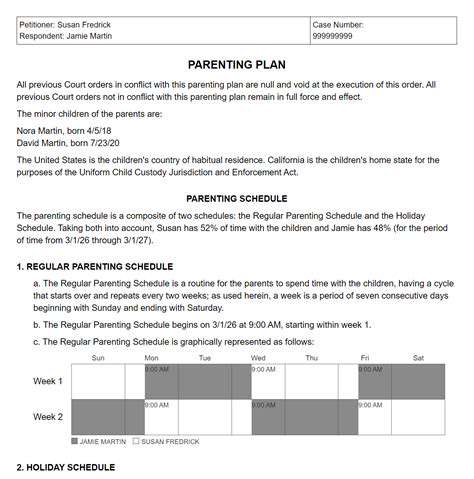How to Recognize Divorce Cold Violence Signs
Understanding the Concept of Cold Violence
Cold violence, a form of emotional abuse, is often insidious and difficult to detect. It's characterized by a deliberate withdrawal of affection, communication, and emotional support. Unlike physical abuse, the harm is inflicted through a lack of engagement rather than overt aggression. Recognizing this pattern is crucial in understanding the dynamics of abusive relationships and taking steps to protect oneself.
This withdrawal can manifest in various ways, from ignoring a partner's needs and emotions to avoiding conversations and intimacy. Often, the abuser may appear outwardly calm and collected, making it even harder for the victim to understand the underlying emotional harm they are experiencing.
Identifying the Silent Treatments
One key indicator of cold violence is the frequent use of the silent treatment. This involves intentionally withholding communication and emotional response in an attempt to control and manipulate the other person. This can range from brief periods of silence to extended periods of disengagement, leaving the victim feeling isolated, confused, and uncertain about the nature of the relationship.
The silent treatment can be used to punish, to exert power, or to avoid difficult conversations. It creates a climate of fear and uncertainty, making it hard to predict behavior and maintain emotional stability within the relationship.
Observing Patterns of Emotional Distance
Beyond the silent treatment, cold violence often involves a gradual but consistent emotional distancing. This might include a reduction in affection, physical touch, or shared activities. The abuser may become emotionally unavailable, appearing detached and indifferent to the other person's needs and feelings.
This pattern of emotional withdrawal can create a sense of loneliness and isolation within the relationship. The victim may feel as though they are losing their partner, even if the abuser maintains a physical presence.
Recognizing the Lack of Emotional Support
A significant component of cold violence involves a consistent lack of emotional support. This can manifest in refusing to listen empathetically to the victim's concerns, offering dismissive or invalidating responses, or outright ignoring the victim's emotional needs. This lack of support erodes the victim's sense of security and belonging within the relationship.
Noticing the Manipulative Tactics
Cold violence often employs manipulative tactics to control the victim. These tactics can include making the victim feel responsible for the abuser's behavior, gaslighting, or subtly undermining the victim's self-worth. These tactics are designed to create dependence and control, making the victim question their own perceptions and judgments.
Understanding these manipulative tactics is key to recognizing cold violence and taking steps to protect oneself. Recognizing these patterns is crucial in understanding the dynamics of the relationship and ensuring personal safety.
The Impact on Self-Esteem and Well-being
The consistent emotional withdrawal and lack of support associated with cold violence can have a devastating impact on the victim's self-esteem and overall well-being. The victim may start to question their own worth and value, believing that their needs and feelings are unimportant or invalid. This can lead to feelings of isolation, depression, and anxiety.
The long-term effects of cold violence can be severe and can significantly impact the victim's ability to form healthy relationships in the future. Recognizing the signs and seeking help are crucial steps in overcoming the impact of this type of abuse.
Recognizing the Pattern: How Cold Violence Differs from Normal Conflict

Recognizing the Underlying Patterns in Cold Weather Phenomena
Understanding the intricacies of cold weather patterns is crucial for effective forecasting and preparedness. Analyzing historical data, coupled with current atmospheric conditions, allows for a deeper understanding of the factors driving these events. This in-depth analysis enables us to anticipate potential impacts and develop strategies to mitigate risks associated with extreme cold.
The interplay of various atmospheric elements, such as pressure systems, wind patterns, and moisture content, significantly influences the development and intensity of cold weather events. By identifying recurring patterns in these elements, we can improve our ability to predict and respond to cold snaps, ensuring the safety and well-being of communities.
The Impact of Geographical Factors on Cold Weather
Geographical location plays a critical role in shaping the characteristics of cold weather events. Mountains, valleys, and bodies of water can all affect temperature gradients and wind patterns, leading to localized variations in cold weather intensity. Understanding these geographical nuances is essential for accurate forecasting and tailoring preparedness strategies to specific regions.
Coastal areas often experience milder winters compared to inland regions due to the moderating influence of ocean currents. This phenomenon highlights the importance of considering regional variations when assessing the potential impact of cold weather.
Predictive Models and the Science Behind Cold Weather
Sophisticated computer models play a vital role in predicting cold weather events. These models utilize complex algorithms and vast datasets to simulate atmospheric conditions, enabling meteorologists to forecast temperature trends and precipitation patterns with increasing accuracy. Models are constantly being refined and improved, and their accuracy is a significant factor in preparing for and responding to cold weather.
Historical Data and its Significance in Pattern Recognition
Examining historical weather data provides valuable insights into the frequency and severity of past cold weather events. Studying these patterns can help us identify recurring trends and potential long-term climate shifts. This historical context is crucial for developing effective strategies to cope with future cold weather events.
Community Preparedness and Mitigation Strategies
Effective community preparedness is essential for minimizing the impact of cold weather events. Public awareness campaigns, emergency response plans, and access to essential resources are all critical components of a comprehensive strategy. Implementing proactive measures, such as distributing warm clothing to vulnerable populations and ensuring access to heating assistance, can significantly reduce the risk of cold-related illnesses and injuries.
Furthermore, encouraging energy conservation measures and promoting community support networks can enhance the resilience of communities during cold weather periods.
Protecting Yourself and Your Children: Strategies for Dealing with Cold Violence
Understanding Cold Violence
Cold violence, a form of emotional abuse, is often subtle and difficult to identify. It involves a pattern of neglect, emotional withdrawal, and disregard for the victim's feelings and needs. Unlike physical abuse, the harm inflicted is often psychological and insidious, leaving victims feeling isolated, worthless, and questioning their own perceptions. Recognizing the signs and understanding the dynamics of cold violence is crucial for breaking free from this damaging cycle.
This type of abuse can manifest in various ways, from ignoring a person's attempts at communication to consistently dismissing their opinions and feelings. The lack of emotional response, the detachment, and the overall indifference create a chilling environment that can severely impact mental well-being and self-esteem. Understanding these patterns is the first step towards protecting yourself and your children from this form of abuse.
Identifying the Signs of Cold Violence
Recognizing the signs of cold violence is paramount to addressing the issue effectively. Common indicators include a partner or caregiver consistently refusing to engage in meaningful conversations, emotionally withdrawing during disagreements or stressful situations, and displaying a lack of empathy or concern for the victim's feelings. These actions create a vacuum of emotional support, leaving the victim feeling unseen, unheard, and unsupported. It's essential to pay attention to these subtle but damaging patterns.
Another key sign is the consistent dismissal of the victim's needs and desires. This might manifest as a complete lack of interest in the victim's hobbies, interests, or goals. The victim may feel as though their opinions and perspectives don't matter, leading to feelings of powerlessness and insignificance. This systematic disregard can significantly harm self-esteem and emotional well-being.
Protecting Children from Cold Violence
Children are particularly vulnerable to the damaging effects of cold violence. Parents who exhibit this behavior might emotionally withdraw from their children, neglecting their emotional needs, and failing to provide consistent support and nurturing. This lack of emotional connection can result in significant psychological distress for children, affecting their self-worth, their ability to form healthy relationships, and their overall emotional development. It's crucial to create a safe and nurturing environment for children, free from emotional neglect.
Recognizing the signs of cold violence in a parent figure is essential. If a parent consistently avoids emotional engagement, fails to provide appropriate emotional support, or demonstrates a lack of empathy, it's vital to seek professional help and support for the child. Early intervention can mitigate the long-term impact of this type of abuse on a child's development and well-being.
Strategies for Dealing with Cold Violence
Addressing cold violence requires a multifaceted approach. Seeking professional help from therapists or counselors specializing in relationship dynamics and emotional abuse is crucial. These professionals can provide guidance and strategies for navigating the complexities of this type of abuse and developing coping mechanisms for the victim and their children. This support is essential to facilitate healing and promote emotional well-being.
Building a strong support system is also vital. Connecting with friends, family members, or support groups can provide a sense of community and understanding, allowing victims to feel less isolated and more empowered. Sharing experiences and seeking advice from others who have faced similar situations can be immensely helpful in navigating the emotional challenges associated with cold violence. Creating a support network and reaching out for help is a key part of the healing process.
Seeking Professional Help and Support
Seeking professional guidance is crucial for navigating the challenges of cold violence. Therapists specializing in relationship dynamics and emotional abuse can provide invaluable support and strategies for coping with the emotional distress and trauma associated with this type of abuse. Professional help can provide a safe space to process emotions, develop coping mechanisms, and gain a deeper understanding of the dynamics at play. This support is essential to facilitating healing and promoting recovery.
Support groups can also offer a sense of community and understanding. Sharing experiences with others who have faced similar situations can help victims feel less isolated and more empowered. These groups can provide a safe space to connect with others navigating similar challenges and develop strategies for moving forward in a healthy way.
Read more about How to Recognize Divorce Cold Violence Signs
Hot Recommendations
- divorce asset division legal checklist
- how to overcome breakup shock step by step
- divorce self growth strategies for single parents
- how to overcome divorce trauma quickly
- emotional recovery tips for breakup survivors
- divorce breakup coping strategies for adults
- how to find effective divorce counseling online
- divorce custody battle resolution strategies
- how to find affordable breakup counseling services
- best co parenting solutions for divorce cases











